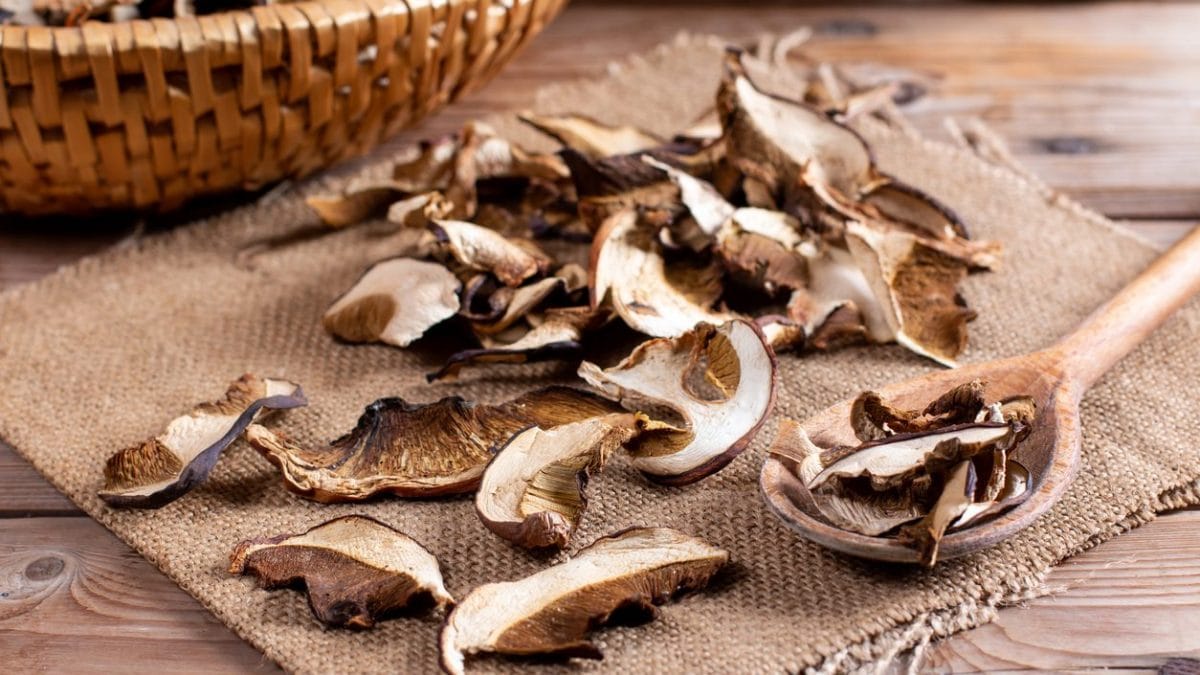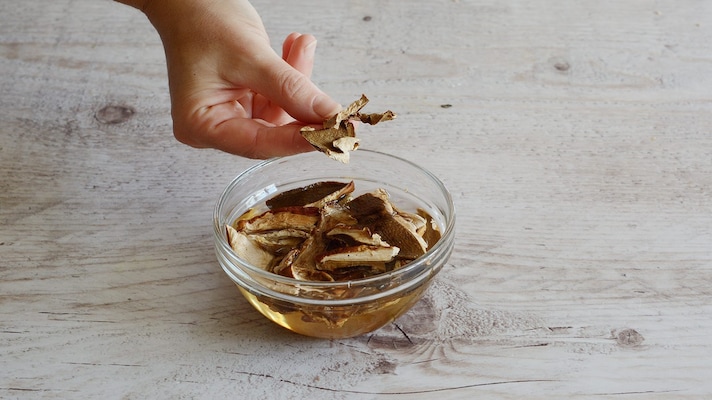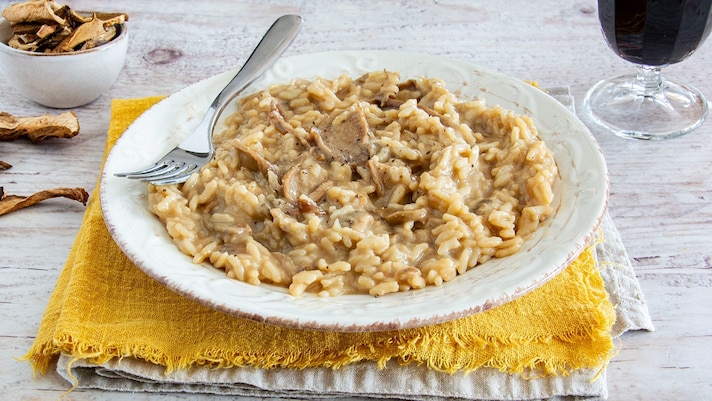
Dried mushrooms are one of those ingredients that always come in handy in the pantry. Why? They have the great advantage of being long-lasting, take up little space, and, thanks to the drying process—which requires no additives or preservatives—they are a true concentrate of aroma and flavor. Unlike fresh mushrooms, which, depending on the variety, have a limited seasonality, dehydrated mushrooms can be used year-round to enhance a wide variety of recipes. And let's not forget one important detail: they are very practical and easy to use. Let's see how.
Methods for Rehydrating Dried Mushrooms
To eat them, dried mushrooms must be rehydrated. This is a simple but essential step, allowing them to become soft and palatable again. The most common method involves soaking them in warm water in a bowl for at least twenty to thirty minutes (refer to the instructions on the package), so that they regain their consistency and increase in volume. Regarding the amount of water: 1 liter for every 30 grams of mushrooms is generally recommended. Once they are ready, it's best to drain them and gently squeeze them lightly to avoid damaging them: they can be dried whole or sliced. Don't throw away the water: filter it through a fine-mesh strainer or cheesecloth to remove impurities and use it to flavor risottos, soups, and sauces. Using the same precautions, you can also rehydrate dried mushrooms in broth, whether meat or vegetable, to add an extra touch of flavor. Less popular is soaking them in milk, which enhances their flavour and tenderness, thanks to the fatty component: a variation on the theme that can be useful when you want to cook mushrooms in a pan seasoned with butter or cream, or in full-bodied creams and soups.

The Most Common Varieties of Dehydrated Mushrooms
There are various types of packaged dried mushrooms available on the market. Porcini mushrooms are one of the most popular dried varieties: highly prized, they're not always easy to find fresh, and this version becomes an excellent alternative. Chanterelles, honey mushrooms, and button mushrooms are other mushrooms that are commonly purchased dried: it's not uncommon to find them in bags with a mix, the classic mixed mushrooms, a very versatile option for playing with textures and flavors. In recent years, Asian mushrooms have also appeared on the shelves, such as Japanese shiitake, allowing you to experiment with Asian-inspired preparations, such as the iconic dashi, the quintessential umami broth.
How to Use Them in The Kitchen
Once rehydrated, dried mushrooms become a versatile ingredient: depending on the recipe, you can adjust the size by simply cutting them with a knife. They don't have a firm texture, but are slimy and mushy: their advantage is that they impart the characteristic flavor expected from a dish featuring this forest fruit, used alone or paired with fresh mushrooms, which tend to have a better consistency but a more delicate flavor. Remember that if you want to do the conversion, you don't have to use the same quantity: use approximately 10 grams of fresh mushrooms for 1 gram of dried mushrooms.

Add them to the soffritto for a mushroom risotto, as well as to a pasta sauce, where you can add tomato puree. They also flavor ground meat or sausage for a ragù, whether white or red, used to dress pappardelle or gnocchi, or paired with polenta. The soaking water can be used in place of broth, to enhance the dish's intensity. Dried mushrooms generally benefit from long, stewed dishes such as stews or braised meats: add them towards the end of cooking, after sautéing them with garlic and oil. They are also excellent as a filling for omelettes and savory pies: try them in a savory mushroom and potato pie, always pre-soaked and flavored in a pan with garlic, oil, and herbs to taste.
;Resize,width=767;)
